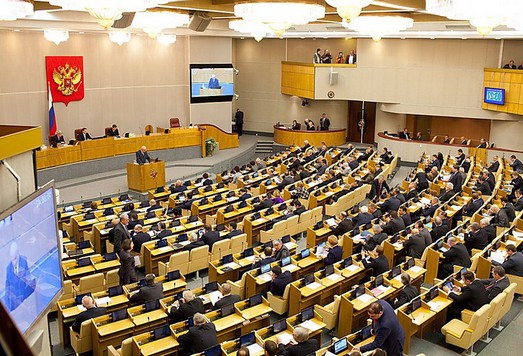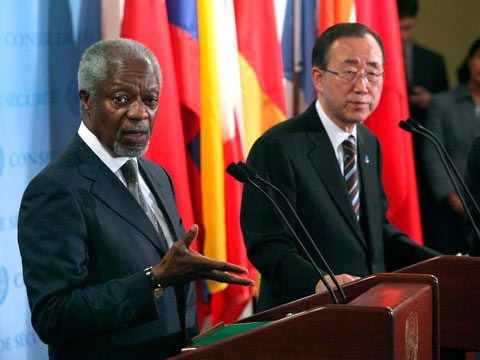The institute of international law is a special structure. Its acts provide regulation of the attitude of states in order to maintain cooperation and peace. Next, we consider the principles and norms of international law.

General information
The system of international law is presented as a set of legal acts, characterized by an orderly division into relatively independent parts (sub-sectors, industries, etc.) and at the same time unity. The sphere of interactions between the countries of the world acts as a material structure-forming factor. It is she who serves the system of international law. Moral-political and legal factors of formation are presented as the basis and goals of the structure.
Sources of International Law
This is the form in which the rule of behavior of the parties to the relationship, binding in the legal sense, is expressed. It gives the quality of the rule of law. For example, the form is the Constitution, a by-law (order, resolution, decree of the competent state agency, etc.), the Law (Federal, Constitutional) and so on. The very definition of "sources of law" is usually used in two meanings: formal and material. In the latter case, we are talking about the conditions of public life. Formal (they are most interested in lawyers) include forms in which legal norms are expressed. Only they act as a legal category. They are included in the subject of the study of relevant disciplines, including international law.
Scroll
The list of sources of international law is fairly unclear. There is no exhaustive list in legal documents today. There is only an indicative list currently used by experts and scientists. It is contained in article 38 of the judgment International Court of Justice Organizations OH. It states that the body is obliged to resolve disputes referred to it and apply:
- Convention. International (general and special) acts of this kind establish special rules that are definitely recognized by the disputing countries.
- World custom as evidence of global practice.
- General legal principles recognized by civilized states.
- Doctrines and judgments of the most qualified lawyers of various nations.

The last paragraph applies with the reservation specified in article 59. These doctrines and decisions act as an aid in determining the rule of law. The general world conventions include treaties in which all countries may or may already participate. They reflect norms that are binding on the international community.
Special conventions include agreements to which a limited number of parties are parties. The provisions of these agreements are binding on them. As a custom that makes up an international legal norm, such a rule can be made that regulates the behavior of the parties to the relationship, which was formed as a result of homogeneous repetitive actions. It has the corresponding legal force. The repetition of an action provides for the duration of its commission. At the same time, modern international law does not establish which period of time should be borne in mind when forming a custom.
International Law
They are generally binding rules of interactions and activities of countries or other parties to relations. For them, as well as for other legal elements, it is characteristic that, being common elements, they are designed for repeated use. The concept of international law provides for their provision in the implementation process through appropriate enforcement measures. At the same time, these rules, which have a certain legal force, have a number of features. Thanks to them, all types of norms of international law form a separate legal structure. Among the features distinguish:
- The subject of regulation. It represents directly the interaction of countries and the related relations of other entities.
- The formation order. In this case, we are talking about harmonizing the positions of states.
- The form of bindings. It corresponds to the conciliatory nature of the essence of the rules of conduct. The form may be a custom, an agreement, an act of conferences or a resolution of world-class organizations.
- Ensuring implementation. It is carried out, as a rule, by the countries themselves, creating international law or forming collective acts. Implementation support is carried out, including through the formation of world-class bodies and organizations. Of particular importance are the measures by which the voluntary application of international law is implemented.
Form classification
There are various types of norms of international law for one reason or another. In their form, they are divided into documented and existing without fixing in a document or an act of a legal type. The first category includes the rules fixed (verbally executed) and established in a certain position. This includes the norms contained in treaties, acts of organizations and conferences of a global scale. The former come from participating countries and extend their action to each state participating in the relationship. Moreover, obligations and rights under the agreement are directed, as it were, from one country to another.
Acts of international organizations (conferences), as well as the opportunities and requirements enshrined in them, come from the general meeting (collective body) of states. At the same time, these rules apply separately to each participating country. The will of the states embodied in these acts, more than in the contractual ones, loses its personification. The legal documents themselves and the negotiation and negotiation process are in the best way consistent with the modern nature of interstate relations.

Unsecured provisions are recognized as binding (confirmed), formed by practice and used in it. They are considered customary rules of international law. They receive their verbal expression in decisions of arbitration, judicial and other bodies of the relevant jurisdiction, in notes and statements of states, resolutions of world organizations. With codification, they become contractual. If only a part of the participants has joined the codification agreement, then one norm for some countries may be contractual, while for others it will remain normal.
The provisions of the Vienna Convention on Diplomatic Relations of 1961 can serve as an example. Another situation may also occur. A documented norm is recognized as mandatory not in the form of express consent for this, but through practical actions, that is, in a simple way. For example, this may be the implementation of activities on the basis of the provisions of world organizations or conferences that were adopted as acts of recommendation.
Regulatory classification
The following types of international law are distinguished in this category:
- Concerning the conclusion, execution and implementation of global agreements.
- Determining the legal status of outer space, the bodies located in it (the Moon and others).
- Regarding the maintenance of peace and security on Earth.
Territorial division
This category includes local and universal types of international law. The latter, in turn, include provisions governing relations in which the object is of general interest. They are recognized by the majority of participants or all subjects of international law. Universal provisions form the basis of the structure, regulate the most important areas of world relations. In particular, they include international law of human rights, victims of war and others. They are recorded in the Vienna Convention on Diplomatic Relations, the UN Charter and other treaties.

Among the universal in a special place are peremptory norms. In accordance with article 53 of the Vienna Convention, they are recognized as undeniable. They must comply with all subjects of international law. Deviation from these rules is unacceptable. Changing these provisions is possible only by subsequent act, which is of the same nature. They regulate international human rights law, the security of civilians and others. In the event of a new provision, existing contracts that run counter to it are invalidated. They lose their power, and their action ceases.
Universal norms prohibit the use of threats by force, provide for peaceful resolution of conflict situations, non-interference in the internal affairs of countries, and conscientious fulfillment of obligations of states to each other.
Local provisions
These include norms that govern interactions within a specific group of countries between two (several) states. Thus, the object of relations is of interest mainly to specific participants. Local international legal norms apply to multilateral and bilateral interactions. They do not have the character of universality. In turn, local norms are classified into non-regional and regional. The former connect several countries located in different geographical areas.

Regional standards govern the interaction of states that are in the same area. Local provisions allow you to take into account the specific interests of countries, local characteristics and conditions. At the same time, their relationship with universal rules becomes apparent. The interaction in this case is manifested in the fact that they can be used to specify the essence of norms that are more general in nature, as well as to ensure the effectiveness of their action. Some local positions have a universal effect in some way. These, for example, include the norms of the treaty between the USA and the USSR on the elimination of short- and medium-range missiles, concluded in 1987, on the limitation and reduction of offensive strategic weapons (1991, 1993).
Functional purpose
Depending on this, there are distinguished security (protective) and regulatory international legal norms. The latter establishes the specific capabilities and obligations of the participants in the relationship. For example, OSCE members must notify of military exercises and invite observers to them. Rights include the ability of states to exchange their diplomatic missions. Security (protective) standards include provisions that are designed to guarantee the implementation of regulatory rules. They are recorded in articles 41 and 42 of the UN Charter on coercive measures used by decision of the Security Council.
Other categories
Depending on the nature of the rights and obligations of subjects of relations, the following provisions are made:
- Prohibitory. They prescribe to refrain from actions that are recognized as unlawful.Such, for example, include the production of biological weapons.
- Binding. They fix the requirements. For example, states should notify about a nuclear accident.
- Eligible. These include, for example, recognition of the capabilities of each state to explore and use outer space.

The concept of international law, as well as general, implies the existence of peremptory and dispositive provisions. The first contains categorical prescriptions. These include contractual obligations on the non-proliferation of nuclear weapons, cooperation in the fight against offenses of an international nature. Dispositive provisions are used unless otherwise agreed in the agreement.
An example is the norm of article 15 of the UN Convention on the Law of the Sea, which regulates the median line in the process of delimitation of the territorial sea, in the case when the agreement between the countries does not provide otherwise. In addition, the division into norms establishing obligations and rights, material ones, is used. Procedural provisions regulate aspects of their implementation. The latter, for example, include the functioning of international organizations, conciliation commissions, and courts.
MCHP
A specific area is international private law. In the relations that it regulates, there is a foreign element and conflict provisions are used. Private international law is a set of acts of domestic law, treaties and world-class customs. They regulate labor, civil and other relations complicated by the presence of a foreign element. The source of private international law is not only state legislation, but also arbitration and other procedural practices. The relations that govern the provisions go beyond the framework of one country and are interconnected with the legal structures of other states.
